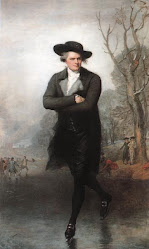 Schiller (close friend of Goethe) travelling about on his mule in non-fashionable but practical outdoorwear in 1787.
Schiller (close friend of Goethe) travelling about on his mule in non-fashionable but practical outdoorwear in 1787.~
In 1775 Goethe, dissatisfied with a life of being a lawyer in Frankfurt, accepted the invitation from Duke Karl Augustus to his court in Weimar, this tiny town in the middle of the forest of Thuringen. Rather than entering into an official day-to-day job at that point, the duke treated Goethe (already famed as the author of “The Sorrows of Young Werther”), as a friend and the two caused hot gossipy scandal (aristocracy on the same level as a non-noble!) by riding hard on wild jaunts lasting days or weeks through the forested countryside, camping, laughing, playing jokes on the locals, enduring fatigue and displaying physical prowess and love of sport.
Soon enough, settled in Weimar Goethe entered into a complex, not easily definable, virtuous love relationship with Charlotte von Stein, aristocrat at court, seven years older, married with children. The attraction was one of infatuation on Goethe’s part, tempered by the practical, stoic keen intelligence and restrained emotion on the part of the noble Stein, later blossoming into love, yet ending in the sudden departure of Goethe for Italy ten years later.
~
Charlotte and her husband were the owners of a small country estate called Gross Kochberg
( click here for a sketch of the estate by Goethe, a talented illustrator in his own right) ,
and here for a photograph. Today by car, one can reach this estate leaving Weimar in about an hour. In those days, it would take a day by horse, or a good 24 hrs to walk. Goethe would do both, to visit the lady of the manor. The tricorne or bicorne hats surely wouldn’t satisfy the need for protection against the elements. I mention all of this because, as many of you know, the weather in Germany can be really horrible; freezing and snowy in the winter, rain and thunder in the summer. So that romping through the wilderness that then existed between Weimar and Jena, or trekking to the country house of the beloved, all means that “weather appropriate” clothing is a necessity. In particular, a hat to protect the eyes and neck from the sun, providing warmth and protection from rain and snow, would be a must in those days when reaching a destination by walking or horseback was the norm... The tricorne or bicorne? no way. Thus, I believe that William Grant used, for his portrait, a FASHIONABLE form of this type of outdoorwear, nominally known in GERMANY as the
Schlapphut. To see Goethe in Schlapphut click here.
the Skater (William Grant) by Gilbert Stuart 1782 National Gallery of Art
Is this a man projecting melancholy? (As proposed in Gilbert Stuart by Barratt and Miles referencing both Presssly and Evans). I believe, in short, this is a man of fashionable elegance and atheletic prowess and skill, with an air of happy self-satisfaction, to be out getting exercise!
The Barratt/Miles book describes the hat worn by the Skater as a “wide-awake hat” which makes no sense to me. The definition of a “wide-awake hat” is variably descibed as “inspired by the paramilitary campaign organization of the 1860s”, “popular in the American West during the late 1800's”, “affiliated with the Republican Party during the 1860 election” OR best definition “a hat with a low crown and very wide brim”.
Thus Grant chose a hat suitable for the weather for an outside activity on such a grey day; warm, protective against a possible snow flurry while engaging in sport out in nature, yet clearly an article of FASHIONABLE OUTDOORWEAR with a band around the base of the crown decorated with a buckle (as well as fancy buckles on his shoe/skates!). His whole outfit portrays elegance and up-to-date, practical fashion and proper gear for skating. Notice the peep of a tan leather glove, also indicative of expensive fashion, and the fur lapels. The stance, arms crossed, puts the viewer on notice that the skater has perfect balance, ie atheletic prowess, as he skates perfect circles etched into the ice. Notice in the background, the unfashionable bi-and tri-corne hats on the MEN, with arms flailing and legs wide apart, and ...poor saps... wearing NO GLOVES!
I believe that with the soaring popularity of Goethe, Schiller, and Kauffmann both in Europe and abroad, all promoting the love of nature at this time, the Schlapphut, already made popular by the German artists in Rome, became THE current article of fashion and can also be described as the headgear being worn by Stuart in his self-portrait.

 Schiller (close friend of Goethe) travelling about on his mule in non-fashionable but practical outdoorwear in 1787.
Schiller (close friend of Goethe) travelling about on his mule in non-fashionable but practical outdoorwear in 1787.









1 comment:
Ein Hut ist sehr wichtig im Leben!
Post a Comment